|
|
||||
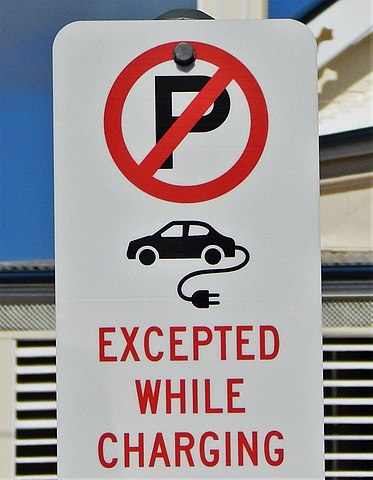 A sign in Rockhampton. Where do they mention the fine though? | Photo by RegionalQueenslander Block a sacred weather-changing EV from a charging point and you may have to sell your carFeel the fear. The whole EV fantasy is coming undone as people miss planes, get stuck in cars, or ruin holidays because their battery is flat. There aren’t enough chargers, and charging is slow. In abject desperation, some Australian states are slapping monster fines on to make inadequate infrastructure stretch further, or because they realize how vulnerable they are to a protest campaign. Either that or they are actually trying to finance the transition to NetZero through parking fines. Call it a secret subsidy… Victorians may be hit with a $370 fine if they drive a normal car and accidentally park it in an EV charging spot, thus depriving a sacred EV user of the chance to top up. You might think that’s wildly out of proportion — it’s only $100 less than if you recklessly run a red light. But it’s nothing compared to what NSW, Queensland and the ACT are doing. Drivers in these states who make the same mistake could end up paying, respectively, a blistering $2,200, $2,875, or $3,200. It’s just climate maths at work isn’t it? Take any normal number and extrapolate to bankruptcy. How long would I have to spend in jail for non-payment, I wonder? Drivers face steep fines for parking non-electric vehicles in electric vehicle charging stationsby Someone at The ABC So it’s written in the road rules but “little known”? The fines, some of them added to road rules late last year, range from $3,200 in the Australian Capital Territory to $369 in Victoria. Drivers could be fined as much as $3,200 for parking in spaces for electric vehicles as part of little-known penalties introduced in four states and territories. Remember when they said EV charging would be fast and convenient, and it would be easy to build a network of chargers? Then they found out the lack of EV charging spaces is threatening their whole fantasy transition… But experts say the heavy penalties are important to encourage electric vehicle adoption and prevent drivers doing the equivalent of parking “in front of a fuel bowser”. Yes, because lots of people accidentally park in front of fuel bowsers and go shopping, right? Lots, as in — absolutely no one, ever. Maybe because fuel bowsers aren’t sometimes placed in what used to be normal parking spots. 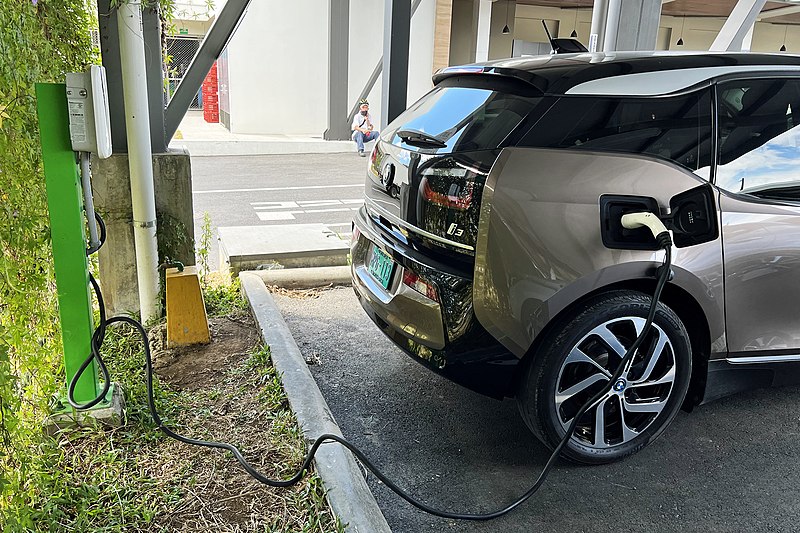 | Photo by Mariordo of a charging station in Costa Rica. You might be ICE-ing a climate warrior…Apply a malignant acronym, and suddenly these car drivers who park in a spot with a charger sound like terrorists or a drug gang: The fines apply to drivers who leave petrol or diesel vehicles in spaces designated for electric cars, in an act known as “ICE-ing” for its use of internal combustion engine cars. So EV drivers need another subsidy then? NSW Metropolitan Roads Minister Natalie Ward said the government added the offence to “support the transition to electric vehicles on our roads”. “To make sure we keep the community moving forward, we want electric vehicle drivers to have access to charging stations when they are on offer,” she said.
It’s the sense of entitlement that shines like leaders of a weather cult: Australian Electric Vehicle Association national president Chris Jones said while the penalties for blocking infrastructure were high, they were necessary to educate members of the public who may not have considered the repercussions. People who aren’t driving EV’s must be really really stupid, yeah? In Chris Jones’ vision, the sort of fine that stops dumb punters running a red light needs to be five or ten times bigger so they understand how they are threatening the planet, or at least, threatening his plans to sell more EV’s. Imagine if EV cars were a personal luxury, doing almost nothing of benefit to society, and everyone was expected to learn new rules, avoid their parking spaces, and practically go to jail if they made a mistake? Electric Vehicle Council policy head Jake Whitehead said the fines sent “a very clear and strong signal”. But he said greater education may be needed for petrol car drivers who encountered chargers added to existing car parks, as well as new electric vehicle drivers who did not recognise the need to vacate charging locations for other drivers as soon as practical. At least they recognise that some EV drivers also haven’t read and memorized Labor’s Powering Australia Plan either. Nor, after being sold sunshine on stilts, have they figured out that the rushed EV-transition is doomed to run up hard against the brutal reality of charging times and access to kilowatts. Imagine how inconvenient it would be as an electric car owner to have to return to your car from shopping or a business lunch because the car’s finished charging and you need to park it somewhere else or face a $3,000 fine? Don’t worry, there will be a phone App for that soon, so your car can call you. The cult confuses “want” with “need”:
“Every charger available is critical and valuable to the fleet of 80,000-odd EVs in the country, and we need to make sure they’re not blocked, either intentionally or accidentally,” he said. “There are genuine mistakes made by some people, but we need to have a broad recognition across society that these chargers need to be available to EVs so we can have more on our roads.” Every charger is critical to keep their fantasy alive… The expert science bubble has popped. New polling shows 60% of US voters agree that that Climate Change is a religion and has nothing to do with the climate. Even more shocking is that 47% of US voters strongly agree. It’s an Exocet for the priests of Climate Science. Their power depends on people believing “they are The Science”, and The Science is sacred. But word is spreading that the experts are more like prophets-of-gloom than disciplined researchers. And once the idea is seeded, it won’t go away. People who didn’t notice before will suddenly see the failed predictions, the ice age that never came, the droughts that become floods and the snow that children wouldn’t know. Humans are excellent at pattern matching, just give them the right pattern to look for… This is an idea that has barely been mentioned in mainstream TV yet half the nation are already 100% sold. Ten days ago Vivek Ramaswamy talked about the climate religion on Fox News, and so Rasmussen asked the punters. And thus the emperor has no clothes — fully six out of ten agree that “Climate is a religion”. Vivek Ramaswamy on FoxNews:…the climate religion actually has nothing to do with the climate. It is all about power, control, dominion and apologizing for America’s own success. And the reason why is that this religion looks the other way when PetroChina picks up the projects that American companies drop. Last time I checked, it was global climate change, and also it’s hostile to nuclear energy, which is truly bizarre because that’s the best form of carbon-free energy production known to mankind. This Rasmussen question is Kryptonite There is no pussy footing around the question, no ambiguity, no caveats: “Do you agree or disagree with this statement: Climate change has become a religion that actually has nothing to do with the climate and is really about power and control?” AGREE – by Party
Even nearly half the democrats agree. Does anything show better that democracy is not about voters anymore? There are no vote winners for pushing the climate faith, instead there is a vast untapped sea of voters who think climate change is a money making scam. They want someone to vote for, not a politician who says I’ll be less of liar than the other guy. Strong questions bring out strong answersIn a world of wishy-washy surveys, just saying the flagrant bleeding truth in full technicolor will bring out a stronger response than tip-toeing around the point. Sometimes just asking the question provokes the answer. How many people heard the question and went — oh yeah, now that you mention it… The last dynamite poll in the world of surveys was in late 2015 when Donald Trump stepped out and said “climate change is a total hoax”, and when asked, 31% of US voters agreed, which was astonishing in an era when three quarters of Americans would also say “climate change is happening” and “was a threat” to the US. Now, half the voters are so cynical they believe the media is actively trying to deceive them. And the meme is even more dangerous because it’s closer to the truth — “climate is a religion” not only includes the hoax, but also explains the blind passion of the teenage throwers of soup and glue. They are not hoaxers, they’re just deluded kids. Live by the smear, die by the smearFor 30 years the Climate Crisis Team have talked about the dark influence of fossil fuel money, like it was Gore’s Law of Physics, and it worked to inure sleepy people against skeptical points. But now the tables are turning and the insidious suggestion that “it’s all about power, control and money” will work every bit as well against those who never once spoke up to stop the namecalling and demonization of other scientists. They could have told the world there are no sacred cows in science, instead they created the cows — “there is a consensus!”. They could have said that science is not a religion because there is no bible, but instead they held up the IPCC reports like The Word of Mother Nature. Instead of debating skeptics, with their overwhelming evidence, they called them deniers and fled from the room. 97% of climate scientists acted like science was a religion. Karma comes back to get them. The creed of the global warming craze, –Ruairi UPDATE: The Rasmussen survey was by phone and online and involved 950 likely US voters on March 6-8, 2023. h/t ColA via Gateway Pundit Last winter’s debacle in Australia could be repeated this year, but at even higher prices. Despite adding more cheap renewables per person than nearly anywhere on Earth, for some inexplicable reason our retail electricity prices rose 18% last year and are set to rise another 20 to 30% this winter. Last year was a bloodbath on the wholesale electricity market. Those costs have fed through to retail.
The Energy Minister Chris Bowen blames the Russians, and says we need more renewables. Shock power bill jump to hammer householdsPerry Williams, The Australian Power bills for households will soar by hundreds of dollars a year from July 1, adding to soaring cost of living pressures as the regulator blamed supply challenges and volatility for the steep cost hit. Customers in Victoria face a 30 per cent jump on ‘safety net’ prices while households in NSW, South Australia and southeast Queensland will see bills soar by up to 24 per cent. The Victorian ruling by the Essential Services Commission estimates power costs will jump by $426 for residential customers to $1829 a year while small businesses face bills surging by a third or $1738 a year to $7358. Energy Minister Chris Bowen suggested measures would be introduced in the May budget to help households cope with the coming bill shock. … “Russia’s invasion of Ukraine has seen energy costs skyrocket globally, and Australia has not been immune,” he added. For 40 years electricity prices went down, but something changed in the last ten years. What could it be? 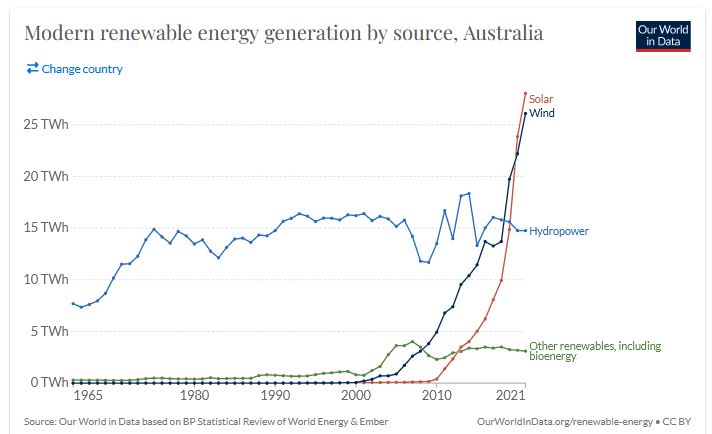 Source: OWID Australia “invested” $4 billion dollars in renewables just last quarter. Despite waves of inflation in the 1970s Australian electricity kept getting cheaper. Engineers were improving the system faster than the costs went up. Then the government joined all the separate state grids into one big bureaucracy and decided to change the weather as well, and we can see how that worked out.
The bigger the bureaucracy is, the more it can screw things up. Keep reading → Strange things are happening in the calm before the storm…This week the financial world balances on the edge, and all the old rules have broken. Joe Biden is signing off on an oil drilling program on US soil which he said he’d never do — and it’s one of the largest ever — like building “66 new coal plants”. At the same time the Bank of England is apparently cutting the sacred climate change spending, and has leaked this news to the world. As someone said on Twitter, “last week was a different country”. After all these years, climate change has fallen out of the Weekly Hit Parade of Panic.  Bank of England Headquarters, London, photo by Елена Пехчевска Bank of England Will Cut Spending for its Work on Climate ChangeBy Ellen Milligan and Philip Aldrick, Bloomberg Climate programs will slip lower on the central bank’s agenda so officials can focus more on the core operations such as financial stability… As Dr Benny Peiser of NetZeroWatch says “the risk of costly climate and Net Zero policies have become a bigger threat to the UK’s economy and financial stability than climate change.” It’s not all good news though. One of the Bank’s new core operations is “a digital currency” — which is the ultimate social credit score and even more invasive than a carbon tax. Either climate change is being crushed under the weight of financial reality, or else it’s become irrelevant as newer, more potent scares appear. Sorry to be a cynic. The only thing that has materially changed about reality in the last week are bad loans rattling the stockmarkets. A major turning point?The Bank of England has been pumping climate fear for years, and like the chief Octopus — it has been organizing other central bankers: The move marks a sharp break from the emphasis Mark Carney put on climate during his term as BOE governor from 2013 to 2020. Rishi Sunak, during his term as chancellor of the exchequer in 2021, updated the BOE’s monetary policy remit to “reflect the government’s economic strategy for growth that is environmentally sustainable and consistent with the transition to a net zero economy.” BOE officials led by Carney have been among the most vocal in speaking about the climate-related risks facing the global economy in the coming decades. They helped build the Network for Greening the Financial System, a group of almost all the world’s top central banks coordinating best practice on oversight. The Bloomberg reporters also mention that Michael Bloomberg, the owner, “backed Mark Carneys work on the Task Force on Climate-related Financial Disclosures”. It’s all so cosy isn’t it? Presumably Bloomberg himself could easily confirm this story or bury it if he wanted too. Something has changed… Giant, huge, US carbon monster drilling oil project: all OK now?Black is White, Up is down. And after Biden did everything to avoid approving oil drilling on US soil, even being nice to Venezuela, he’s just done exactly that: Joe Biden signs off oil drilling equivalent to 66 coal plants in ‘climate catastrophe’by David Millward, TheTelegraph His administration gave the green light to the Willow Project on Alaska’s North Slope, effectively reversing a policy pledge he made during the 2020 presidential election. Having entered office vowing “no more drilling on federal lands, period”, Mr Biden’s hand has been forced by soaring energy prices, which have fuelled inflation. The Willow Project, which has been led by oil behemoth ConocoPhillips, could produce more than 600 million barrels of crude oil over the next 30 years. Does carbon dioxide matter, or doesn’t it? Obviously, this week is a convenient week for announcing major backflips and hoping people won’t notice. By Jo Nova SVB or Silicon Valley Bank is the US’s 17th biggest bank, or it was until last week when it became the US’s second biggest bank failure instead. Interest rate rises are supposed to squeeze out the dumbest investments, so it is fitting that one of the first casualties of this boom-bust cycle is a green banker, mostly doomed by loaning half their cash to the same bankrupt Big-Government that created the green improbable fantasy industries which SVB was largely serving. SVB was a “Green” Banker. We know this, not because newspapers are saying that now, but because of the emergency flares released on behalf of the victims. The New York Times tells us that the collapse of SVB is going to hit green tech hard because SVB clients included 1,550 companies dedicated to “fighting climate change”. If only SVB had served coal miners or gas frackers instead they might still be in business? The deposits they needed would have kept on coming as the profits flowed in. David Gelles, New York Times, naturally, misses the whole point: Silicon Valley Bank Collapse Threatens Climate Start-UpsIn reality, climate start-ups threaten the bank, and climate finish-ups threaten the country. The bank had relationships with more than 1,500 companies working on technologies aimed at curbing global warming. The bank, the largest to fail since 2008, worked with more than 1,550 technology firms that are creating solar, hydrogen and battery storage projects. According to its website, the bank issued them billions in loans. Groupthink strikes again. The majority of the solar or climate market just banked with the herd: “Silicon Valley Bank was in many ways a climate bank,” said Kiran Bhatraju, chief executive of Arcadia, the largest community solar manager in the country. “When you have the majority of the market banking through one institution, there’s going to be a lot of collateral damage.” It was a Ponzi schemeDuring the pandemic, fluffy money, made from nothing by Big Government to “save the economy” was put into stupid businesses to “save the planet”. The businesses put their cash into Silicon Valley Bank, which got so much cash, it couldn’t do anything with half of it — except give it back to Big-Government in the form of a loan called a Treasury Bond — thus completing one full Cycle of Stupid. Money printed from nothing, achieved nothing, and went back home. On the way a whole lot of people got paid to pretend to change the weather. But money printing causes inflation, and in inflationary times interest rates have to rise. So it follows that when easy money flows into your wallet, easy solutions, like fixed loans with low interest are the stupidest possible solution. SVB was promising to guard Green-tech money, but it was locking it away in long term loans, and essentially relying on a regular flow of deposits coming to keep earlier depositors happy: Silicon Valley Bank Collapse Is A Blow To Clean Energy Techby Mark Le Dain, Forbes …this will be a massive blow to the cleantech ecosystem. After COVID the assets of SVB rapidly grew. New spending dynamics meant money was flowing into tech vs the traditional economy, and those companies were also able to raise funds as well. This money had to be parked somewhere and a lot of it ended up at SVB. It’s rare for a bank to have a concentrated deposit base grow so quickly but, in any regard, they needed to invest it. To invest the deposits the bank targeted long-dated treasuries, with slightly higher interest rates but less liquidity. Even if this was a bad decision banks usually find a way out of it because deposits keep coming, allowing the bank to layer on other types of investments. Many banks will also typically hedge their interest rate exposure. There doesn’t appear to have been hedging though and deposit growth slowed as interest rates rose. The companies were no longer raising funds and instead using their existing funds to run the business. These dynamics meant deposits were now declining at the same time the investments, these long-dated treasuries, were losing value. As the bank announced it had to sell some of these instruments at a loss, and raise capital, people were worried and it resulted in an old-fashioned bank run. There is no free lunch. By definition, if someone is making windmills to change the weather, and people are still throwing money at them, then money is “easy” and inflation is coming. Ultimately, because the government was already broke, and money printing causes inflation, it meant interest rates would have to rise… As sure as night follows day and birds fry midair at Ivanpah. Government committee to stop bank collapses, didn’t see this coming…The USA has a committee to stop this sort of thing, but even they were more worried about climate risks than national ponzi schemes: Silicon Valley Bank had more red flags than a CCP meeting but regulators cared about climate not bank risksSVB’s collapse on March 10 begs the question where were the regulators? By Liz Peek, Fox Business Authorities should have been on high alert. They were not. Consider the Financial Stability Oversight Council, the body created in 2010 after the financial crisis, which was meant to avert just this sort of collapse. The council is chaired today by Treasury Secretary Janet Yellen and includes 9 other voting members including Fed Chair Jay Powell, the heads of the FDIC and the Bureau of Consumer Financial Protection (CFPB), Gary Gensler, head of the SEC. The council’s website defines its task as “identifying risks to the financial stability of the United States…” The council last met on February 10 via videoconference. The readout of that meeting shows the group previewed its 2023 priorities, which included “climate-related financial risks, nonbank financial intermediation, Treasury market resilience, and risks related to digital assets.” Devotion to climate change is a pathological social disorder. Whole civilizations get swept away… Imagine if the national postal service had secret blacklists of people whose mail “should be lost”?
In this case the “posties” are private organizations, but to all intents and purposes, their network connection and obedience to Big-Government made them, in effect, another branch of the government. The government wasn’t paying the postie direct, but it protected the monopoly of the corporate postie team and gave them a legal loophole to hide in, and the media outlets stopped anyone criticizing the government. It was a Pravda-KGB consortium with filters that worked at light speed, but hidden.
Where would we be if Elon Musk hadn’t bought Twitter?In the latest round of Twitter Files, Matt Taibbi shows how Twitter was not just censoring things that would later turn out to be true, but things it already knew to be true. The truth can be malinformation you see — it might influence people not to take a medicine that Twitter has decided they should take. For the last few years, your friends and families medical decisions have been made by a quasi government collective. The only people with informed consent were the censors. As Taibbi says malinformation is just a euphemism for “true but inconvenient.” We can all speak with one voice comrade! The GEC voice…It’s no accident why commentators everywhere seem to shift messages together like a school of herding fish. The censorship industrial complex is not just the government, and the media, and the social media giants but also some of the non-government organisations that once upon a time were supposed to be watchdogs of the government. At the centre of this information cabal was the “Global Engagement Center” (“GEC”) — which was established by Barack Obama with Executive Order 13271. This was in 2015-2016 and marked a shift from managing “counter terrorism” to the much broader “disinformation”. GEK decides who’s on the blacklist, and the lists are looong… From Matt Taibbi on Twitter — “the Censorship-Industrial Complex.”But Twitter was more like a partner to government. With other tech firms it held a regular “industry meeting” with FBI and DHS, and developed a formal system for receiving thousands of content reports from every corner of government: HHS, Treasury, NSA, even local police. Emails from the FBI, DHS and other agencies often came with spreadsheets of hundreds or thousands of account names for review. Often, these would be deleted soon after. We came to think of this grouping – state agencies like DHS, FBI, or the Global Engagement Center (GEC), along with “NGOs that aren’t academic” and an unexpectedly aggressive partner, commercial news media – as the Censorship-Industrial Complex. NGOs ideally serve as a check on corporations and the government. Not long ago, most of these institutions viewed themselves that way. Now, intel officials, “researchers,” and executives at firms like Twitter are effectively one team – or Signal group, as it were.
Michael Shellenberger went with Matt Taibbi to Congress and summed it up on his own Substack: Exposed: America’s Secret Censorship-Industrial ComplexThe censorship industrial complex combines established methods of psychological manipulation, some developed by the U.S. military during the Global War on Terror, with highly sophisticated tools from computer science, including artificial intelligence. The complex’s leaders are driven by the fear that the Internet and social media platforms empower populist, alternative, and fringe personalities and views, which they regard as destabilizing. Federal government officials, agencies, and contractors have gone from fighting ISIS recruiters and Russian bots to censoring and deplatforming ordinary Americans and disfavored public figures. Importantly, the bar for bringing in military-grade government monitoring and speech-countering techniques has moved from “countering terrorism” to “countering extremism” to countering simple misinformation. The government no longer needs a predicate of calling you a terrorist or extremist to deploy government resources to counter your political activity. The only predicate it needs is simply the assertion that the opinion you expressed on social media is wrong. You are free to say nice things about the government:… increasingly, the censors say their goal is to restrict information that “delegitimizes” governmental, industrial, and news media organizations. The cartel wants to protect the industry and media from being “delegitimized” too. They are all assets in the same mafia-style organization. Disinformation isn’t the threat to Democracy, industrial fact-checkers are: Jefferson’s ideas still ring true today. In a free society we don’t mandate truth, we arrive at it through discussion and debate. Any group that claims the “confidence” to decide fact and fiction, especially in the name of protecting democracy, is always, itself, the real threat to democracy. For hundreds of years, the thing that’s distinguished Americans from all other people around the world is the way we don’t let anyone tell us what to think, certainly not the government. The First Amendment, and an American population accustomed to the right to speak, is the best defense left against the Censorship-Industrial Complex. If the latter can knock over our first and most important constitutional guarantee, these groups will have no serious opponent left anywhere. If there’s anything the Twitter Files show, it’s that we’re in danger of losing this most precious right, without which all other democratic rights are impossible. Wouldn’t true information be bliss, –Rauiri hat tip to KP, JB, Honk R Smith, Tombo, Beth the serf, John Connor II, Richard C. Censored logo: Piotr VaGla Waglowski Many Australians face a 20% rise in their electricity bill this coming winter, so it seems odd that the AEMO* forgot to put the price of the cheapest source of electricity in their last quarterly report. The bid-setting prices for brown coal have been some of my favourite graphs, but this quarter, for the first time a whole energy source disappeared. It would only be another 2 digit number in a 69 page report, yet the average winning bid of brown coal generators on our national grid last quarter is not even mentioned? The nation faces major decisions about whether to continue to try changing global weather with our power plants. You would think Australians would like to know which fuel produces the cheapest electricity and by exactly how much? I mean, what’s the true cost of cooling Australia by a thousandth of a degree in 2100? Perhaps the AEMO didn’t like that skeptics spread the message that brown coal could still generate electricity for less than 4c/KWh, or that hydro and gas were seven times more expensive? After all, the head of the AEMO — Daniel Westerman — says we must ramp up renewables to avoid blackouts. I’m sure the AEMO doesn’t want to misinform Australians so I decided to help them by adding in last years brown coal prices to this quarters graph instead: Obviously I’d use the current prices if the AEMO will tell us… we know they know what it is. With 300 years of coal left, Australians could easily reduce electricity prices The nation is still using brown coal, but only at about half the rate. When we had cheap electricity (2010), brown coal would generate 6GW. Now it is only about 3GW. Not surprisingly, the less brown coal we use, the higher the prices rise. Brown coal, also known as lignite, –Rauiri Next winter could work out as badly as the last one:Prices may yet go blockbuster in Australia with one black coal plant closing, and two other turbines broken and delayed another six months: Callide C coal plant delays spark fears of winter energy crunchThe Australian Further delays to the restart of the Callide C coal-fired power station in Queensland, coupled with the impending closure of AGL’s Liddell coal plant, have heightened fears of another harsh winter for the country’s vulnerable energy system. Keep reading → |
||||
|
Copyright © 2024 JoNova - All Rights Reserved |
||||



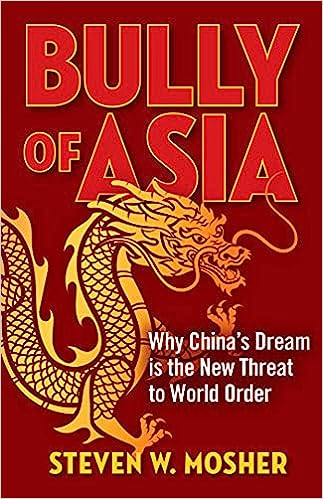
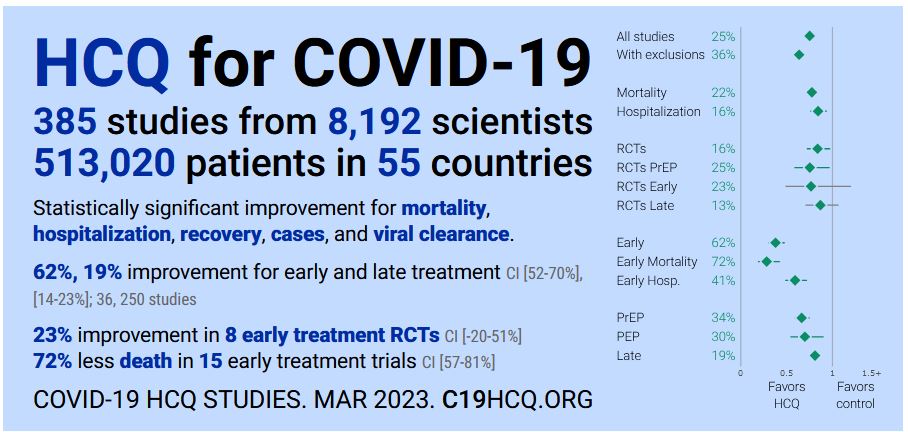

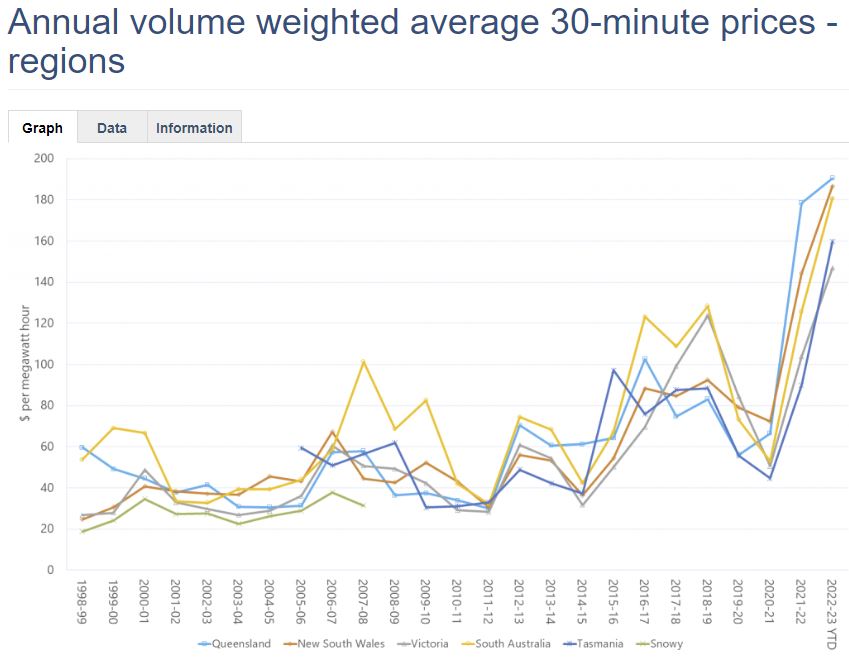
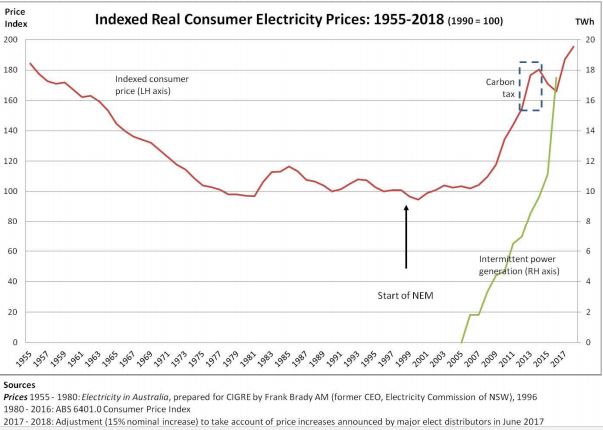

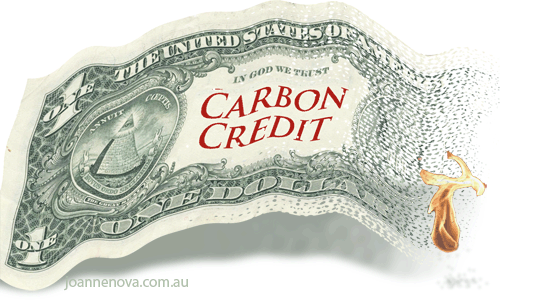

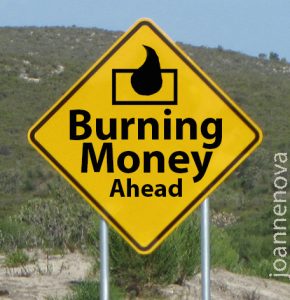


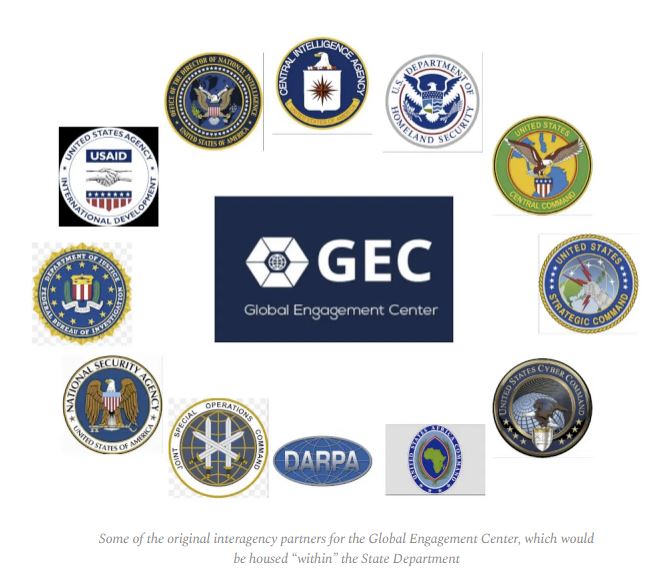

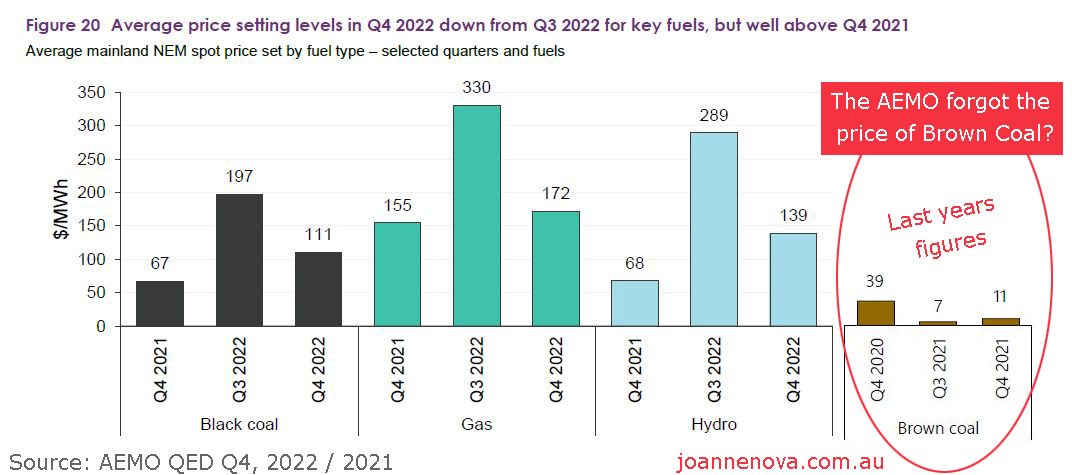











Recent Comments